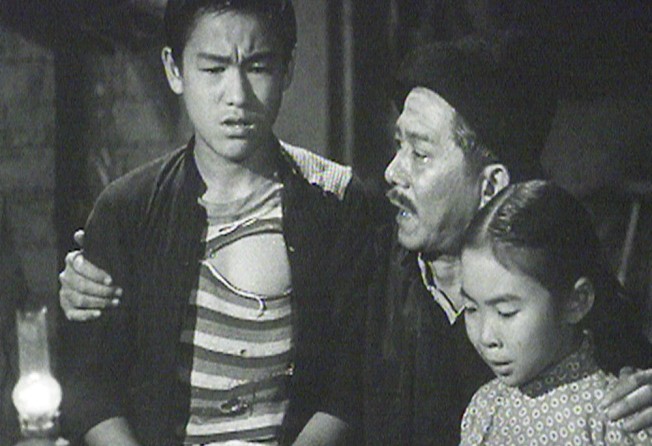Art House: An Orphan's Tragedy takes a Dickensian twist
Paul Fonoroff

Bruce Lee and Josephine Siao Fong-fong's appearances in An Orphan's Tragedy are undoubtedly today's chief selling points for this 1955 Cantonese adaptation of Charles Dickens' Great Expectations.
But beyond the adolescent presence of two future superstars, the drama has much to offer as a microcosm of Hong Kong's mid-1950s film world, and is also a demonstration of how foreign literature was adapted to suit its audience.
Dickens' tale was familiar to local readers and cinemagoers, as David Lean's 1946 version had reached Hong Kong cinemas in 1948.
Dickens' basic premise of a hardworking orphan (Bruce Lee as a young teen, Cheung Wood-yau as an adult) who mistakenly believes his anonymous benefactor is a wealthy but undeserving townsman (Lau Hak-suen) rather than the escaped convict (Ng Chor-fan), is still present. But An Orphan's Tragedy's script actually retained little else of the original English story .
Gone are the nuanced Dickensian characters and social commentary, along with the deletion of the story's most eccentric and ambiguous personages, Miss Havisham and Estella. They are replaced with characters personifying goodness and villainy with little subtlety.
Fortunately, their obviousness is compensated by the skilful performances of some of the best actors to grace the local screen. The studio, after all, was Union (aka Chung Luen), a politically progressive co-operative enterprise whose logo contained 21 stars to represent the leading lights of the industry, six of whom were involved in An Orphan's Tragedy.
The first half of the film, which looks at the protagonist's childhood, is the most atmospheric and least preachy, with the added bonus of providing Lee and Siao (then billed as Siao Liang) with a rare chance to share the stage.
The second half takes place a decade later, after the orphan youth has graduated from medical school and presumably before the Japanese invasion.
An unselfconscious mixture of East and West underscores the thoroughly Hong Kong nature of the entire production. Though a Victorian literary classic may have been its starting point, An Orphan's Tragedy is nothing less than a sterling exemplification of post-war Cantonese popular culture.
September 20, 7pm, Hong Kong Film Archive. Part of the Merry-Go-Movies Star Kids programme